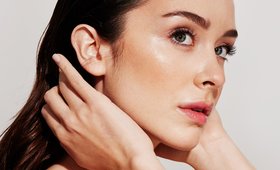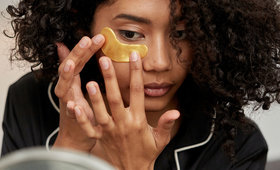Transepidermal Water Loss (TEWL): The Secret Cause of Dry Skin
Published Jan 28, 2020

The beauty industry is teeming with complicated, scientific-sounding words. And as someone who just barely passed high school chemistry, I’ll be the first to admit that all those flashy phrases can get confusing. The thing is, most of these mutli-syllabic buzzwords actually refer to pretty simple (or at least, understandable) ideas. Case in point: transepidermal water loss (TEWL), a phrase that I’ve noticed being thrown around the beautysphere more and more lately. As downright alarming as TEWL sounds (How did the water get lost in the first place? Will I ever find it again!?), it’s actually a pretty easy (and helpful) concept to wrap your head around, and prevent. Let’s get into it.
What is TEWL?
To understand TEWL, we first need to talk about skin. It’s pretty common knowledge that our skin is composed of multiple layers: the epidermis (top), dermis (middle), and hypodermis (bottom). The epidermis is the outermost layer of skin (the one you see when you look in the mirror). Transepidermal water loss refers to the loss of water that passes through the epidermis and evaporates into the air.
What causes TEWL?
TEWL is a totally natural process that happens to everyone. It’s your skin’s way of regulating its water content. However, TEWL can be exacerbated by things like low-humidity weather, damage to the skin, and skincare products that are drying.
What are the signs of too much TEWL?
If your skin is losing too much water, you may notice dryness, flakiness, dullness, itchiness, rough texture and visible fine lines. It’s also thought that TEWL plays a big role in inflammatory skin conditions like acne and eczema.
How can I stop TEWL?
You can’t completely stop TEWL, but you can minimize it and promote a healthy balance of water in your skin. Here are a few tips for reducing TEWL:
-
Get a good moisturizing routine. Make sure that your routine includes humectant and occlusive ingredients. Humectants draw water to the epidermis while occlusives seal that moisture in and protect it from evaporating.
-
Avoid harsh facial cleansers. Heavy-duty, high-pH face washes and soaps can strip the skin’s moisture and make TEWL worse. Opt for a cleansing milk or balm instead of a foaming cleanser.
-
Choose your active ingredients wisely. Overusing active ingredients like retinol and alpha hydroxy acids can damage the skin’s barrier, worsening the effects of TEWL. Try to choose gentle actives (like mandelic acid instead of glycolic acid, for example) and scale back your use to a few days a week.
-
Use a humidifier. If you live in an environment with low humidity, a humidifier can help increase moisture in the air and keep TEWL at bay.













